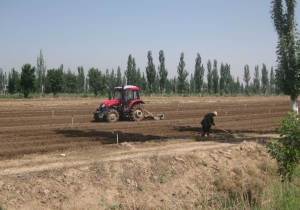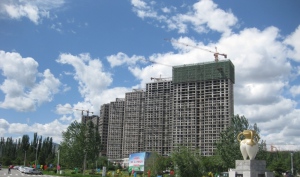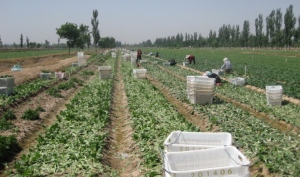We have just finished eleven days of travel in Hong Kong and mainland China, and are now headed back to Canada for the Nuffield International Triennial Conference in Halifax, Nova Scotia. I enjoyed my time in China, but I would be lying if I said I wasn’t looking forward to home, even if it’s just my home country. I’m looking forward to familiar-looking food, road signs, toilets, and a time zone that is closer to the one at home. It’s either 4 pm (in China’s time zone), 8 pm (wherever the plane is right now), or 4 am (at home) right now. Either way, the sun is up outside the window, and will be for the entire 13-hour flight as we fly over northern Russia, the Arctic, and northern Canada. This flight marks the half-way point in this ten-week journey, and as far as I know I still have my sanity and things are going okay at home too.
For me, China has been a tale of two worlds in competition with each other: rural vs. urban, rich vs. poor, big vs. small, manual labour vs. high-tech automation. As in other parts of the world, some of the major concerns in Chinese agriculture are availability and access to land, water and people (labour).
The rural and urban divide takes on many faces. In China, farming is seen by many (especially urban people, but many rural people too) as a low class, undesirable career choice. Many farm workers in rural China are working hard and saving money so that their families and especially their children can have “better” lives moving to the cities. The government of China also has a policy of actively moving people from the countryside and rural towns into cities, with something like 200 million people to move from rural to urban homes between now and 2030. In each of the cities we visited, there was a massive level of construction going on, with multiple clusters of 15 to 20 twenty-plus-storey apartment buildings actively being built.
At the same time, China is in the process of modernizing farming, but it is quite complicated. No one in China owns land (it all belongs to “the People” or the country) but individual families have the rights to use the land. Each family has the right to use their plot of land, called a “Mu”, that is approximately 2/3 of a hectare in area. If the family is not using the land themselves, as is the case in families that move into the cities, they can lease their right to use their land to another farmer. In the case of larger farms, this means they may be dealing with lease arrangements with hundreds of people. In the case of the vegetable farm that we visited, the cost of leasing the land was associated with the cost of rice each year. At the dairy farm that we visited, the individual cows from small farms were “leased to own” by the new larger farm, and the farmers that stayed in the area work at the dairy or grow crops to be fed to the cattle.
The divide between rich and poor is quite noticeable, although there is an ever-growing middle class, especially in the cities. The growth of the middle class is expected to be the main driver for increased consumption of goods, especially protein (milk and meats) in the near future.
What really struck a chord with me was the amount of manual labour in use. Whether it was cutting machine parts and assembling by hand at a seed cleaning machine factory, hand picking and hand sorting wolfberries, packing bags of garlic, planting rows of corn, or sweeping the city roads, there was an incredible amount of tasks performed by manual labour. As long as that labour is relatively inexpensive and available, this is likely to continue to some extent. There is evidence of modernization and automation on the larger farms and factories that we visited, and I expect that modernization and automation will continue to happen as labour costs increase and as labour becomes less available. It is expected that by 2050, only 30% of China’s population will be of “working” age.


